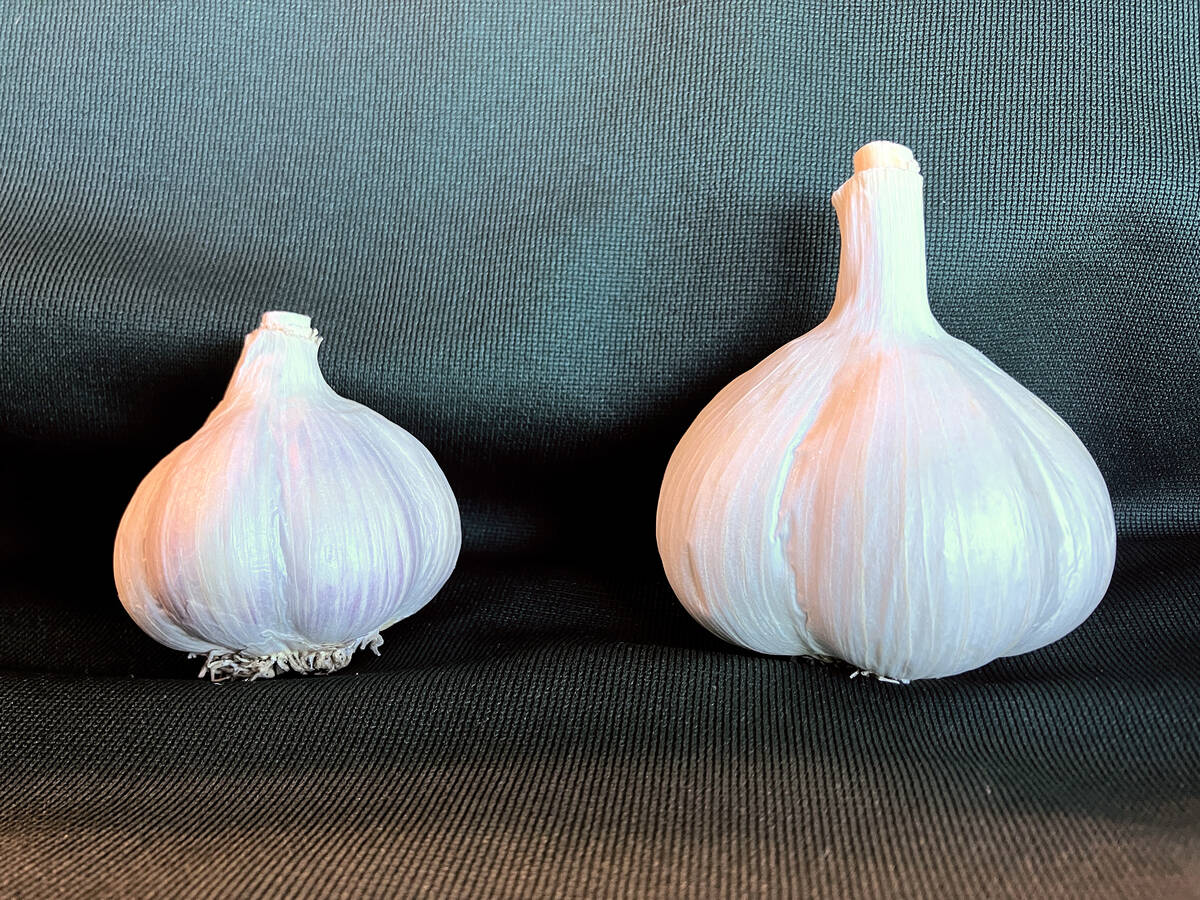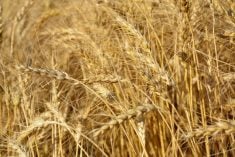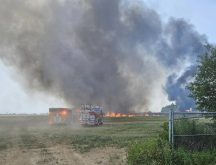Uneven staging of wheat fields across Ontario is making it difficult for farmers to make the call on when to harvest.
Why it matters: Difficulty with timing of harvest can create a window of opportunity for fusarium development, lodging problems and poor quality grain.
Less than ideal conditions last fall and the cold, wet spring has led to insufficient growing conditions for the wheat crop.
Joanna Follings, Ontario Ministry of Agriculture, Food and Rural Affairs wheat specialist, has seen fields where sections of one field emerged last fall and others this spring.

“(Farmers) are almost dealing with different wheat crops in one field,” says Follings. “It has already created challenges with trying to manage for fusarium head blight earlier this season.”
In most cases, the main stem is maturing quicker than the tillers, by about six to 10 days.
DON cast models have shown higher risk for fusarium, as moist conditions and warm temperatures are conducive to fusarium head blight.
“It’s already showing up in Essex county, so we don’t want to leave the wheat in the field for too long. The longer in the field, the more fusarium can develop,” says Follings.
She suggests farmers harvest when the majority of the crop is mature, with the understanding that there may be some parts that are off target. She suspects an increased use of desiccants this year as farmers try to even out maturity.
Read Also

Clean seed garlic promises bigger bulbs and higher returns for growers
Ontario garlic trials show clean seed outshines conventional yields, with stronger drought resilience, reduced virus risk and greater economic outcomes.
“Growers (will be) applying (a desiccant) in hopes of helping to bring that crop along to full maturity, particularly the tillers.”
Applying a pre-harvest desiccant is ideal when 85 per cent of the peduncles (uppermost inner node) have turned from green to brown.
“The labels of glyphosate and Eragon say to apply at the hard dough stage, when moisture is 30 per cent. It is important not to apply too early as we don’t want any residues in the grain.”
If farmers find fusarium in their wheat, they should harvest infected fields first to prevent the spread into other fields and to get the crop dried down, she says.
Wheat is ideally stored at 13.5 per cent moisture. Harvesting as close to that as possible is best, but this year’s uneven staging will make that difficult for many farmers, she says.
Harvest is usually underway in many parts of Ontario by late July, but is only just getting going in most of the province.















